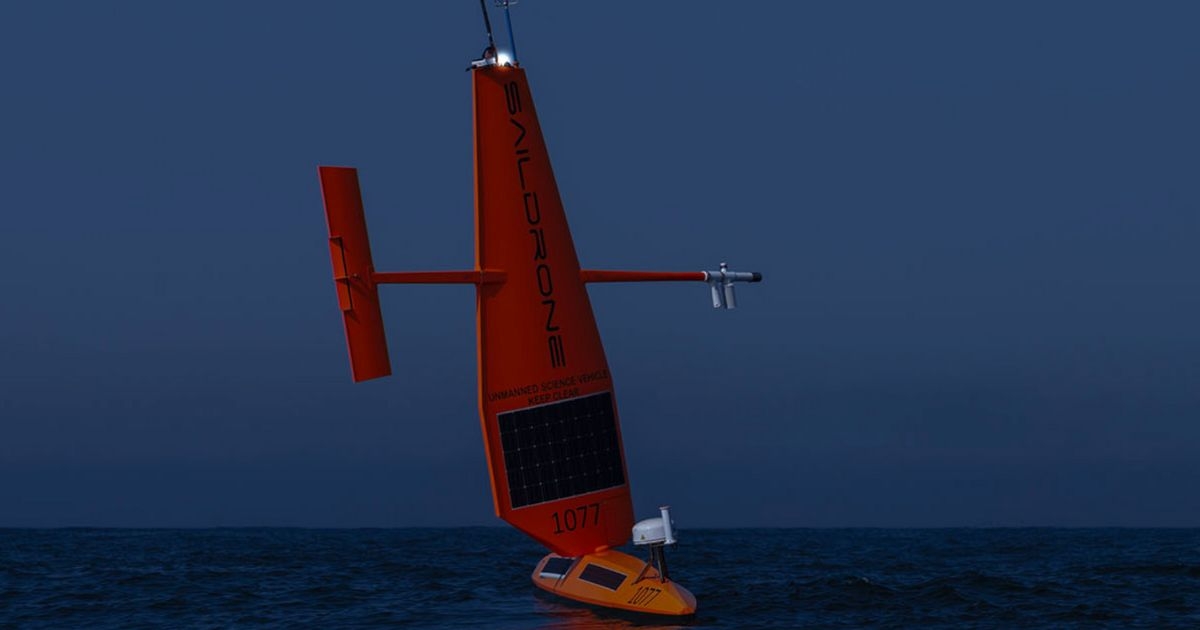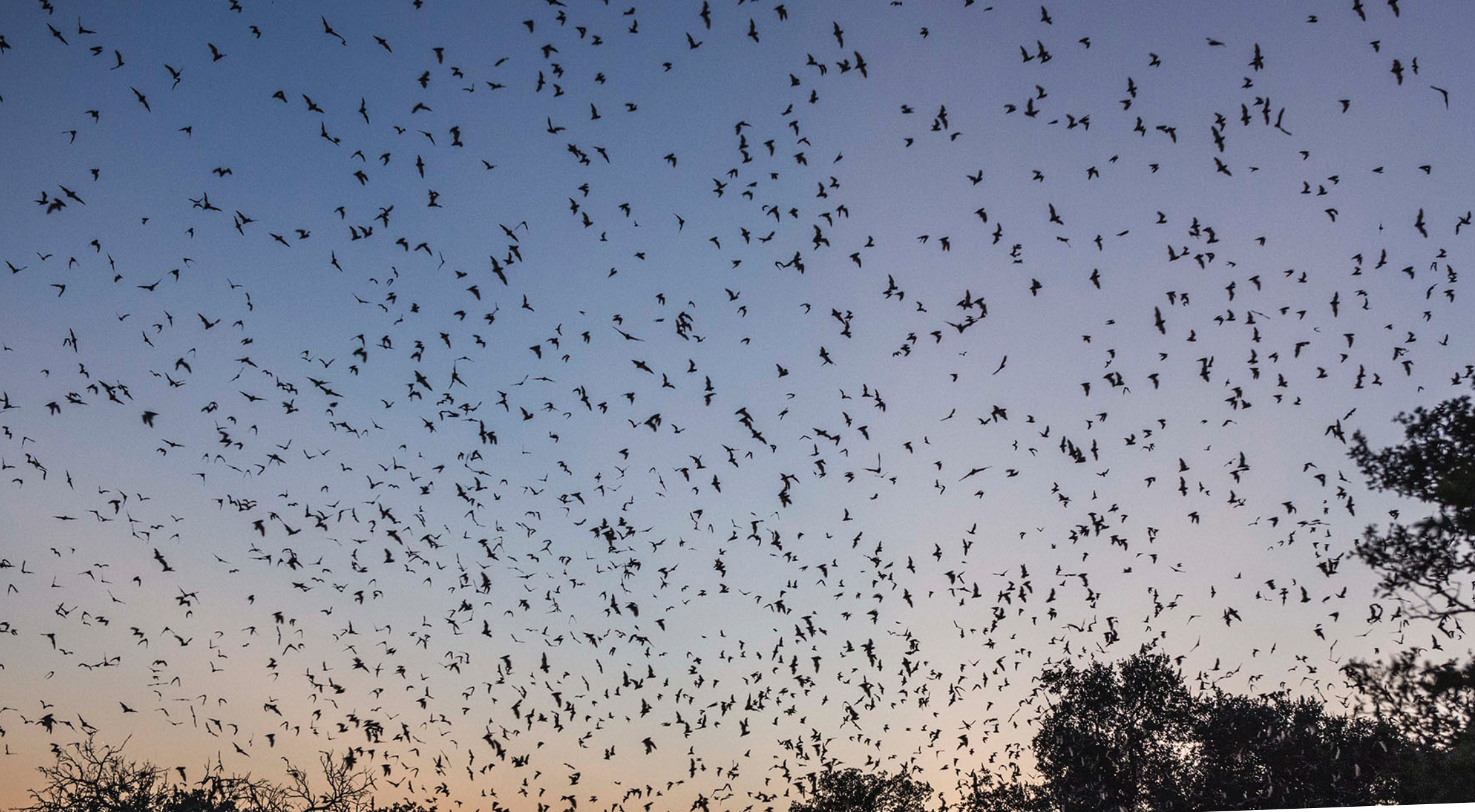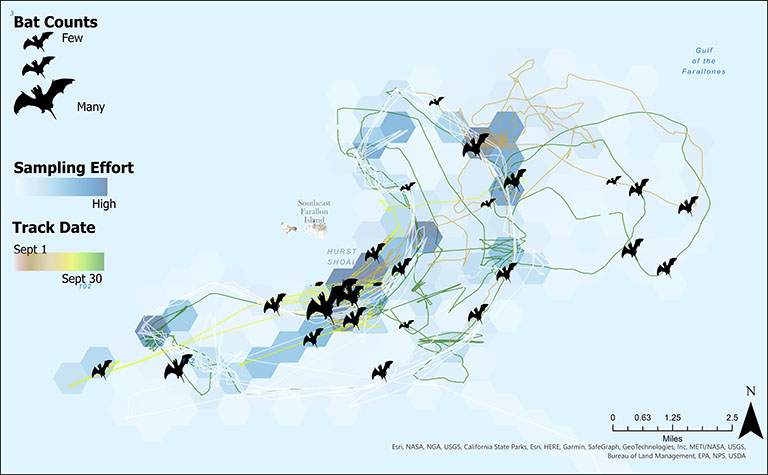First-of-its-Kind Mission to Detect Bats at Sea with Saildrone USV

Saildrone, a world’s leading provider of ocean data using uncrewed surface vehicles (USVs), and Bat Conservation International, a global conservation organization dedicated to ending bat extinctions, are excited to announce today the completion of a first-of-its-kind mission to study bats in an offshore environment using an ultrasonic microphone mounted on a Saildrone USV.
The joint announcement is made on the first day of Bat Week 2023, an annual international celebration to raise awareness for bat conservation.
There are more than 1,400 species of bats, and bats make up about 25% of all mammals. In North America, bats contribute about $23 billion in pest control services to the agricultural industry. Around the world, bats are crucial for pollination and seed dispersal and consume insects that transmit diseases.
 Mexican free-tailed bats emerge from a cave. (Image credit: WyattMcSpadden/Bat Conservation International)
Mexican free-tailed bats emerge from a cave. (Image credit: WyattMcSpadden/Bat Conservation International)
“With a zero operational carbon footprint, no impact to the marine ecosystem, a diverse payload, and the ability to stay at sea for extended lengths of time, Saildrone is ideally suited to provide never-before-collected information about offshore bat migration patterns.
This important information will allow us to understand and minimize the potential impacts of offshore wind energy development on bat populations,” said Michael Whitby, BCI director of Bats & Wind Energy Program.
The mission is funded by the Department of Energy in collaboration with EPRI, an independent, non-profit energy research and development organization. The goal is to help demonstrate the viability of the Saildrone platform as a tool for bat research and environmental impact assessments to evaluate the risk of offshore wind energy development to bats.
“The need to monitor bats in the offshore environment is increasing,” said Christian Newman, technical executive for environmental aspects of renewables, EPRI. “EPRI’s expertise and focus on collaboration supports the project team well, helping test a new type of technology that can help fill in data gaps for offshore wind decision-makers.”
 A graphic showing the saildrone’s mission track around the Farallon Islands and the rough location and density of the bats it recorded. (Image credit: Bat Conservation International.)
A graphic showing the saildrone’s mission track around the Farallon Islands and the rough location and density of the bats it recorded. (Image credit: Bat Conservation International.)
One Saildrone USV equipped with an ultrasonic microphone in addition to the standard Saildrone sensor suite spent 31 nights sampling near a known offshore bat migratory roost on South Farallon Island, approximately 25 nm west of the Golden Gate Bridge. During the mission, the saildrone recorded at least three species of bats and 830 individual bat calls.
“Saildrone’s quiet platform has long been valued for underwater acoustic research, and we are thrilled to leverage it in this new way to help protect the world’s bat populations,” said Cristina Castillo, Saildrone Sr. Program Manager for Ocean Data Programs.
Saildrone’s underwater acoustic data collection includes surveys of fish biomass for sustainable fisheries management and has previously used sound to track sharks, marine mammals, and crustaceans. The company is currently developing new underwater acoustic technology to detect, classify, and localize marine mammals, especially whales, which are highly sensitive to underwater noise.

